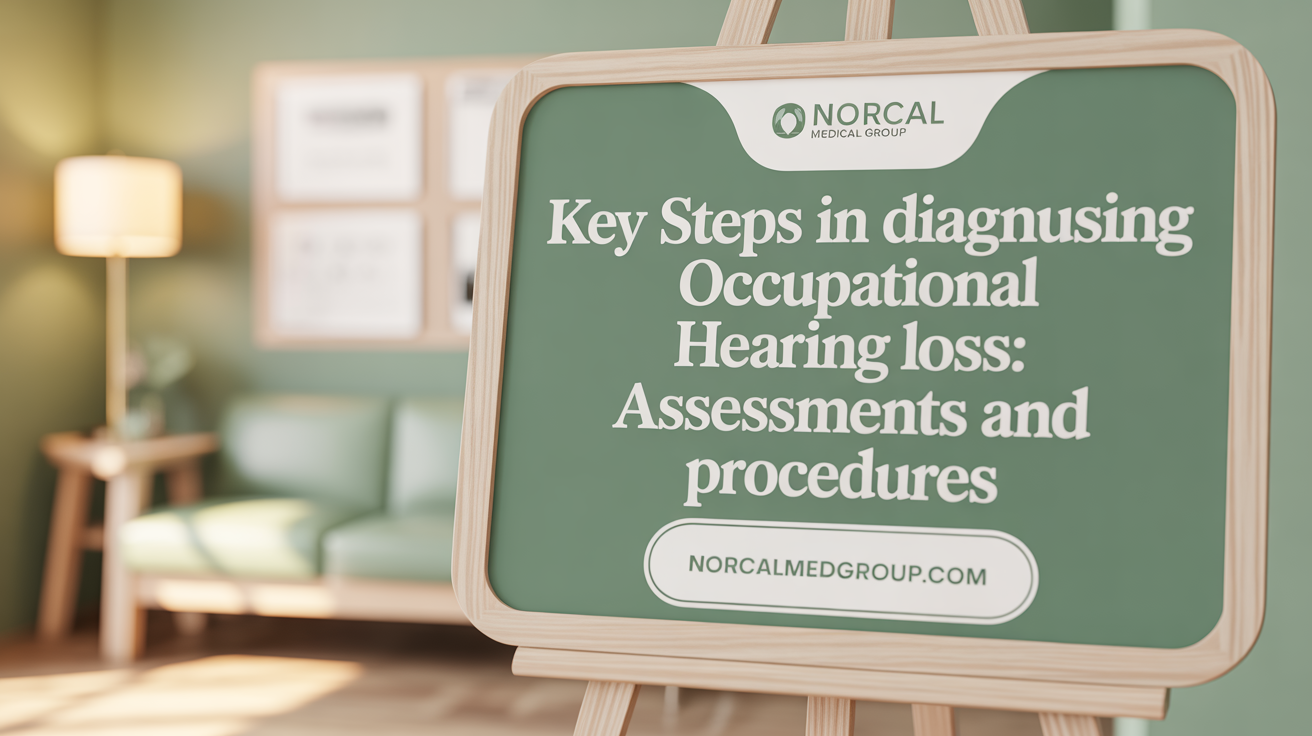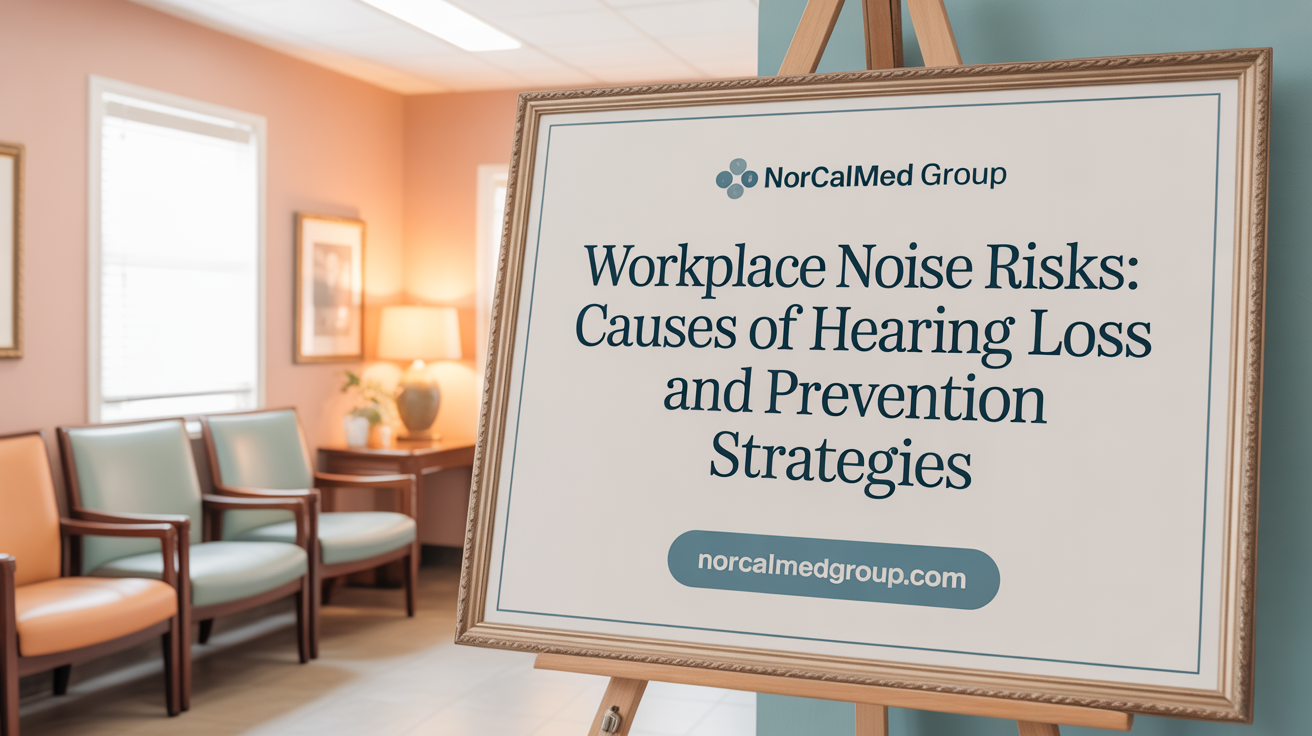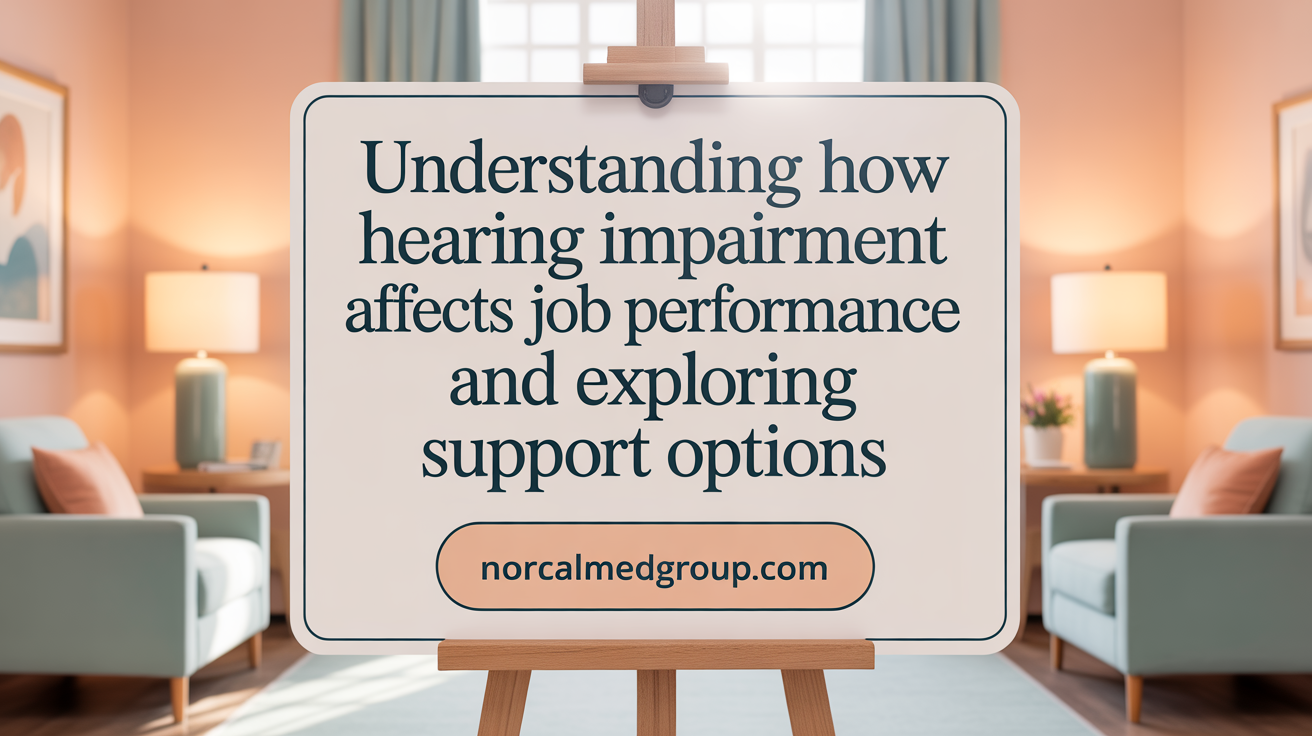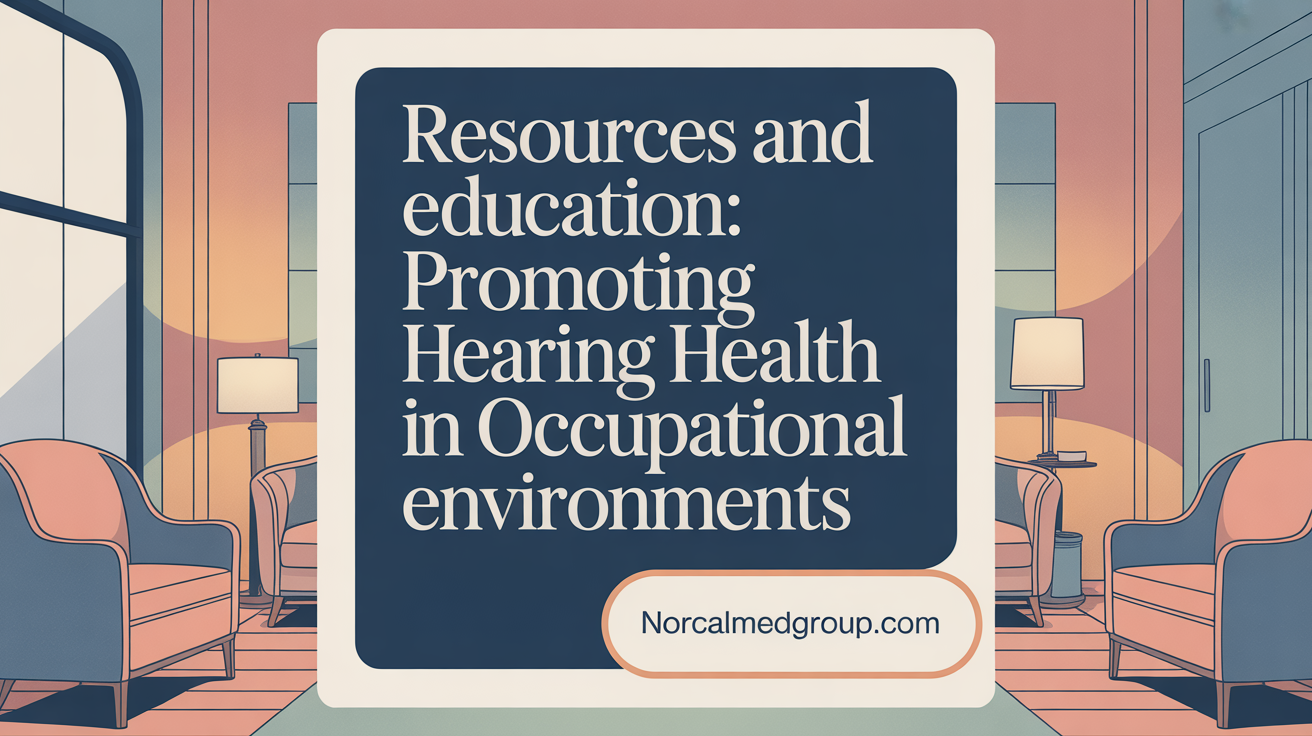Understanding Occupational Hearing Loss and Its Evaluation
Hearing loss in the workplace is a prevalent occupational health concern, often developing gradually due to prolonged exposure to hazardous noise and other factors. Effective evaluation and management are essential to protect workers' hearing, ensure compliance with legal regulations, and maintain productivity and safety. This article outlines the key steps in diagnosing hearing loss, explores causes and prevention strategies, explains legal requirements, and highlights practical accommodations and advocacy for affected employees.
Key Assessment Procedures for Diagnosing Occupational Hearing Loss

What are the key assessment steps and procedures for diagnosing hearing loss?
Diagnosing occupational hearing loss involves a series of thorough assessments carried out primarily by audiologists or hearing health professionals. The first step is a detailed clinical evaluation, including a medical history review to identify potential causes, duration of noise exposure, and any medical conditions that could influence hearing health.
The core assessment method is audiometric testing, which includes pure-tone audiometry. This test measures the softest sounds a person can hear at various pitches (frequencies), typically between 250 Hz and 8000 Hz. The results are plotted on an audiogram, showing hearing thresholds for each ear.
These audiograms help determine the type and severity of hearing loss—whether it’s conductive, sensorineural, or mixed. Alongside pure-tone testing, speech audiometry evaluates how well an individual can recognize speech at different volume levels and in various backgrounds.
Additional assessments include tympanometry, which assesses middle ear function by measuring eardrum movement and middle ear pressure, helping identify issues like fluid or infections.
Otoacoustic emissions (OAEs) are used to evaluate outer hair cell health in the cochlea. If OAEs are absent or abnormal, it can indicate cochlear damage, typical in noise-induced hearing loss.
In more complex cases, auditory brainstem responses (ABRs) may be conducted. This test measures nerve activity in response to sounds, providing information on neural pathways that might be affected.
Before testing, otoscopic examination is performed to rule out blockages such as earwax or infections that could influence results. All data from these procedures, combined with medical history, contribute to a comprehensive understanding of the patient’s hearing condition.
This multi-faceted approach ensures that the diagnosis of occupational hearing loss is accurate, enabling targeted interventions, accommodations, and preventative measures to be implemented effectively.
Causes and Risk Factors: How Workplace Noise and Other Agents Impact Hearing

What causes hearing loss in occupational settings and how does hazardous noise contribute?
Hearing loss in workplaces is often caused by prolonged exposure to loud noises, which can damage the tiny hair cells in the inner ear. These hair cells are crucial for converting sound vibrations into nerve signals that the brain interprets as sound.
When noise levels reach or exceed 85 decibels (dB) over an average eight-hour period, they can start to harm hearing. Sounds above 80-85 dB, especially if exposure is continuous, gradually impair these hair cells, leading to permanent hearing loss.
Certain industries face higher risks due to the nature of their work. Construction, manufacturing, military, mining, and agriculture frequently involve exposure to machinery, explosives, or loud equipment. For example, equipment like bulldozers, print presses, lawn mowers, and sirens can produce noise exceeding safe limits.
The damage occurs because the hair cells in the cochlea are overwhelmed by the high-volume sound environment. This damage not only affects hearing acuity but can also lead to conditions such as tinnitus (ringing in the ears) and balance problems.
Preventive strategies are vital. Use of hearing protection devices like earplugs and earmuffs, implementing engineering controls to reduce noise at the source, and following safety regulations can help minimize risk. Regular hearing tests and monitoring are also essential to catch early signs of damage and prevent further deterioration.
In summary, workplace noise is a leading cause of occupational hearing loss. Managing the exposure levels through protective measures and regulations plays a critical role in safeguarding workers' hearing health.
Effective Prevention and Noise Management Practices in the Workplace
What prevention strategies and noise management practices are effective in workplaces?
Implementing effective noise prevention and management practices is vital to safeguarding employees' hearing health. One of the foundational approaches is adopting a hierarchy of noise controls, starting with engineering modifications, followed by administrative policies, and finally, personal protective equipment.
Engineering controls are the most effective measures and involve modifying equipment or the environment to reduce noise levels. Examples include installing sound barriers, using mufflers or silencers on machinery, and isolating noisy equipment in soundproof enclosures. When noise levels cannot be sufficiently lowered through engineering means, administrative controls come into play. These include limiting the duration employees spend near loud sources, scheduling work in noisy environments for shorter periods, and implementing work rotations to minimize exposure.
Monitoring workplace noise levels with sound level meters and noise dosimeters is crucial for identifying high-risk areas. Regular assessments help ensure that noise exposure remains below OSHA and NIOSH recommended limits—specifically, less than 85 decibels (dBA) averaged over an eight-hour workday. If noise exceeds this threshold, additional controls are necessary.
Provision of hearing protection devices (HPDs) such as earplugs and earmuffs is essential, especially in environments where noise cannot be fully controlled. Proper training on how to wear and maintain these devices is critical for their effectiveness.
Employee education plays a central role in prevention. Informing workers about the risks of noise-induced hearing loss, symptoms to watch for, and the importance of reporting early signs can prevent irreversible damage. Coupled with this, implementing hearing conservation programs—including annual audiometric testing—helps detect early changes in hearing and assess the effectiveness of control measures.
Together, these strategies form a comprehensive approach that prioritizes reducing noise exposure, protecting hearing health, and fostering a safety culture. By integrating engineering solutions, administrative policies, protective equipment, and ongoing education, workplaces can create safer environments, prevent hearing loss, and ensure the well-being of all employees.
Legal Standards and Employer Responsibilities for Hearing Conservation
What are the legal standards and regulations related to occupational hearing health?
The main legal framework governing occupational hearing health in the United States is set by the Occupational Safety and Health Administration (OSHA). OSHA requires that employers implement a hearing conservation program whenever employee noise exposure reaches or exceeds an 8-hour time-weighted average (TWA) of 85 decibels A-weighted (dBA).
This program must include measures such as noise monitoring, audiometric testing, employee training, and provision of hearing protection devices. Employers are mandated to carry out engineering controls—like equipment modifications or source elimination—and administrative controls to reduce noise exposure, especially when levels surpass 90 dBA. Audiometric testing must be conducted baseline tests within three months of employment and annual follow-ups, using specific standards for testing environments.
Records of noise levels, monitoring results, and audiometric data are required to be kept for the duration of employment plus 30 years. Employees have the right to access their audiometric results and reports, ensuring transparency and enabling early detection of hearing changes.
The regulations also define what constitutes a standard threshold shift (STS), indicating potential occupational hearing loss—a decline of 25 decibels or more in hearing thresholds. Employers must notify affected workers and take corrective action when such shifts are identified.
Overall, these standards aim to prevent noise-induced hearing loss, protect remaining hearing, and foster a workplace culture of safety awareness. The law emphasizes early intervention, regular monitoring, and proper protective measures, aligning with the goal of safeguarding employee health and ensuring compliance with occupational safety regulations.
For more detailed information, search for "OSHA regulations for occupational hearing loss."
Impact of Hearing Loss on Workplace Performance and Accommodations

How does hearing loss impact work performance and what accommodations can be made?
Hearing loss can affect many aspects of job performance, making communication more difficult and increasing the chances of mistakes or misunderstandings. Employees may find it hard to follow verbal instructions, participate in meetings, or communicate effectively with coworkers, especially in noisy environments.
This can reduce overall productivity and lead to safety concerns, as important alarms or warnings might not be perceived promptly. Besides hindering job tasks, hearing loss can contribute to mental fatigue and social withdrawal, affecting workplace morale.
To support employees with hearing challenges, the ADA (Americans with Disabilities Act) requires employers to implement reasonable accommodations. These can include various tools and modifications such as:
- Assistive listening devices and hearing aids
- Captioned telephones and real-time captioning services
- Visual alerts for alarms and notifications
- Rearranging workspaces to reduce background noise
Employers should foster a supportive environment through training and awareness programs. Creating accessible communication methods not only helps individuals with hearing impairments perform their duties effectively but also promotes inclusivity.
With proper accommodations, employees with hearing loss can maintain their productivity, safety, and engagement at work, enabling them to contribute fully to their teams. Overall, tailored strategies that incorporate technological tools and environmental adjustments guarantee that hearing impairments are managed proactively, empowering workers to thrive professionally.
Employee Advocacy and Communication about Hearing Loss at Work

How can employees advocate for themselves regarding hearing loss in the workplace?
Employees can take proactive steps to ensure their hearing needs are recognized and accommodated. The first step is understanding their legal rights under the Americans with Disabilities Act (ADA), which requires employers to provide reasonable accommodations.
Effective self-advocacy involves clear and honest communication. Employees should openly discuss their hearing challenges with their employer or HR department, specifying the adjustments they need, such as captioned telephones, speech-to-text apps, or amplified devices.
Gathering documentation is crucial. Visiting an audiologist for an evaluation and obtaining a written report supports their request for accommodations. Keeping a record of communications and responses helps build a case if further follow-up is needed.
Connecting with external support organizations like the Hearing Loss Association of America (HLAA) or the National Association of the Deaf (NAD) can provide valuable resources, advice, and community support. These groups can help employees understand their rights and suggest effective advocacy strategies.
Persistent and informed advocacy fosters a more inclusive workplace. When employees confidently communicate their needs and collaborate with management, it promotes better understanding and ensures necessary adjustments are put in place. This not only benefits the individual but also contributes to a healthier, more accommodating work environment.
Resources and Education to Support Hearing Health in Occupational Settings

What resources and guidelines are available for employers and employees to evaluate and address hearing issues?
Employers and employees can access a range of resources and guidelines to assess and manage hearing health risks at work. The U.S. Occupational Safety and Health Administration (OSHA) and the National Institute for Occupational Safety and Health (NIOSH) provide comprehensive standards and tools. For example, NIOSH offers a Sound Level Meter App that enables workers and managers to measure noise levels directly using mobile devices. These organizations also produce research articles, preventive guides, and surveillance programs aimed at reducing occupational hearing loss.
A critical component in compliance is implementing sound monitoring practices, conducting regular audiometric testing, and providing hearing protection devices (HPDs) such as ear plugs or muffs. OSHA mandates measurable noise exposure limits and annual hearing checks for at-risk workers in high-noise settings. When noise exceeds 85 dBA over an 8-hour shift, hearing conservation programs should be in place, including training and exposure monitoring.
In addition to governmental resources, numerous health organizations publish educational materials that promote awareness. These include guidelines for effective communication, proper use of hearing protectors, and early signs of hearing decline. Healthcare providers also offer valuable tools and advice to facilitate better diagnosis and treatment, ensuring workplace safety and sustained employee well-being.
What education should employees have to identify signs of hearing loss and know when to seek assessment?
Employees should be educated about the early indicators of hearing loss. Typical signs include struggling to understand speech, especially in noisy environments, frequently asking others to repeat themselves, and turning up the volume on telephones, televisions, or personal devices.
Additional subtle symptoms include muffled hearing, feeling fatigued after listening, or social withdrawal due to difficulty following conversations. Recognizing these signs can prompt earlier intervention, which is essential to prevent further deterioration.
Training programs should emphasize the importance of regular hearing tests—often through audiometric evaluations conducted in occupational health settings. Employees must understand that prompt assessment by an audiologist can confirm hearing health status and lead to appropriate accommodations or treatment options.
Promoting awareness about assistive technologies, such as hearing aids or communication devices, and encouraging open dialogue with supervisors helps foster a supportive environment. Educating workers about their rights under laws like the Americans with Disabilities Act (ADA) ensures they know how to access necessary adjustments and support, maintaining productivity and social integration in the workplace.
Ensuring Healthy Hearing for a Safer, Productive Workplace
Addressing hearing loss in occupational settings requires a proactive, multi-faceted approach encompassing thorough evaluation, effective prevention, compliance with legal standards, supportive accommodations, and empowered employee advocacy. Early detection through audiometric testing and ongoing education helps mitigate progression and enhances workplace communication and safety. Employers and employees equipped with the right resources and knowledge can work together to foster an inclusive environment that safeguards hearing health. Ultimately, sustained commitment to hearing conservation and supportive measures promotes well-being, productivity, and equity across diverse workplace settings.
References
- Occupational Noise Exposure - Overview - OSHA
- How to Discuss Hearing Loss with Your Employer
- Strategies for Managing Hearing Loss in the Workplace
- Recording criteria for cases involving occupational hearing loss.
- Understanding and preventing hearing loss in the workplace - Chubb
- Workplace Hearing Testing: A Safety Guide - DISA
- Protecting hearing in the workplace: the importance of occupational ...
- Strategies for Managing Hearing Loss in the Workplace
- Working with a hearing loss - a workplace adjustment toolkit - SIRA
